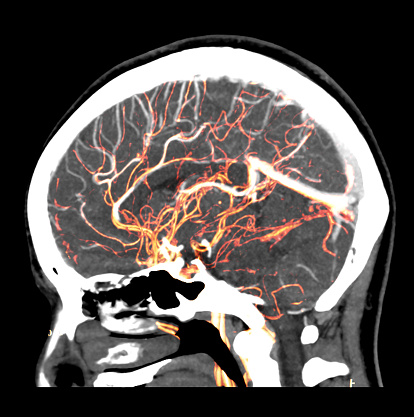Every 40 seconds in this country, someone has a stroke. It’s the fifth leading cause of death in the United States, according to the Centers for Disease Control, and if it doesn’t kill you, it is a major cause of disability.
But despite these statistics, stroke is preventable and treatable. In fact, according to the National Stroke Association, up to 80 percent of strokes can be prevented.
If you know the risk factors for stroke, you can be better prepared to prevent one.
5 Risk Factors for Stroke
Risk No. 1: Diabetes
If you have diabetes, you’re four times more likely to experience a stroke, according to the National Stroke Association (NSA). People with diabetes often have other stroke risk factors such as high blood pressure, high cholesterol or atrial fibrillation. NSA notes that weight loss and insulin are effective ways to manage diabetes.
Risk No. 2: Heart Conditions
Coronary artery disease or other heart conditions like valve defects, irregular heartbeat or atrial fibrillation can all affect your risk for stroke for differing reasons. The plaque that builds up in your arteries from coronary artery disease can block the flow of oxygen to the brain, while irregular heartbeat conditions and valve defects can cause blood clots, which could break loose and cause a stroke.
Risk No. 3: Your Diet
A healthy diet can reduce your risk for chronic conditions such as high blood pressure or heart disease which can influence your stroke risk. Try to limit sodium, added sugars, saturated fats and trans fat. The National Stroke Association recommends you aim for a variety of vegetables and whole fruits, whole grain and low-fat or fat-free dairy.
Risk No. 4: Your Gender
Women tend to live longer than men, which means women are at a higher risk of stroke simply because of age. Consider this: Compared to breast cancer, stroke kills twice the amount of women each year, and women make up nearly 60 percent of stroke deaths.
Risk No. 5: Experiencing a Transient Ischemic Attack (TIA)
A TIA is a brief episode of stroke-like symptoms that can last anywhere from a few minutes to 24 hours. Unlike a stroke, a TIA does not cause permanent damage to the brain.
One morning, Blanche got out of bed and almost fell. She attributed her moment of dizziness to vertigo, and went on with her day. But when she went to lift her arm to turn on a light, she noticed her arm felt “dead.” She rested and felt better, however, when she arrived at work and tried to speak, it felt like she had to “push the words” out of her mouth. Blanche suffered a TIA, and if you’ve had a previous TIA, you’re at an increased risk for experiencing a full blown stroke. In fact, the National Stroke Association estimates a 17 percent risk of having a stroke within 90 days of a TIA.
Even though a TIA seems less severe than a stroke, it is still a medical emergency.
As we’ve seen above, strokes can be prevented. Making healthy lifestyle choices, keeping chronic conditions in check and receiving prompt medical attention for any stroke-like symptoms that concern you, can help reduce your risk of stroke.










